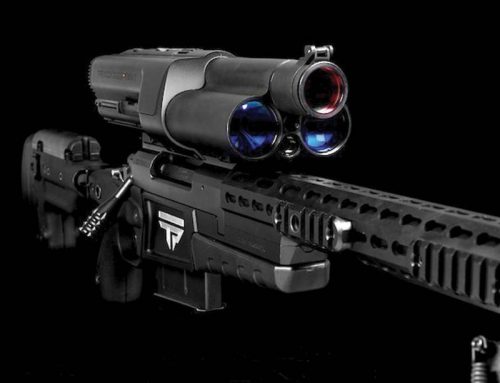The scale and frequency of mass killings have been increasing, and this is likely to continue. One reason — but just one — is that weapons are always getting more lethal. One of the next technical innovations in small arms will be the use of artificial intelligence (AI) to improve the aiming of weapons. There is no reason for civilians to have this technology and we should ban it now.
By lethality, I mean how many people you can kill in a short period. Lethality depends on many factors, including the weapon’s rate of fire, but not just that. Depending on the circumstances, a shooter with a highly accurate bolt-action rifle may be able to kill more people than one with a fully automatic but inaccurate weapon. Life, as they say, is a trade-off.
However, accurate shooting is hard. Bullets fall as they travel, so you need to estimate the distance to the target and compensate by pointing the barrel up. Likewise, bullets are blown by the wind, so you have to measure that and compensate for it. Finally, it’s difficult to hold a rifle stationary, but if you are even a minute of angle off of true aim when you pull the trigger, at 500 yards range you will be several inches off when the bullet reaches the target.
Here is a rifle that uses AI to increase rifle accuracy (see also here). It automatically carries out drop and wind compensation and times the moment of firing so that the barrel is pointed optimally to hit the target.
Made by TrackingPoint, a start-up based in Austin, Texas, the new $22,000 weapon is a precision-guided firearm (PGF). According to company president Jason Schauble, it uses a variant of the “lock-and-launch” technology that lets fighter jets fire air-to-air missiles without the pilot having to perform precision aiming.
The PGF lets the user choose a target in the rifle’s sights while the weapon decides when it is the best time to shoot – compensating for factors like wind speed, arm shake, recoil, air temperature, humidity and the bullet’s drop due to gravity, all of which can affect accuracy.
To do this, the PGF’s tracking system includes a computer running the open-source Linux operating system, a laser rangefinder, a camera and a high-resolution colour display in an integrated sighting scope mounted on top of the weapon. The user simply takes aim and presses a button near the trigger when a dot from the laser illuminates the target.
The computer then runs an algorithm using image-processing routines to keep track of the target as it moves, keeping the laser dot “painted” on the same point. At the same time, the algorithm increases the pressure required to pull the trigger, only reducing it when the gun’s crosshairs are right over the laser dot – and the bullet is then fired.

The US and other militaries are developing similar weapons. The Tracking Point rifle appears to be something that Americans can legally own. The technology will, of course, continue to improve and will get cheaper.
At some point, shooters with rifles like these will begin finding positions overlooking busy city streets, arenas, and schoolyards. Although they will fire at slower rates than the Las Vegas shooter did, far higher proportions of their shots will be fatal.
Or, Americans could decide that only the military and the police need these weapons. The time to make this decision is now before the devices get into circulation.
Someone will say that mass shooting are rare. Moreover, if a future schoolyard shooter can’t get an AI rifle, he will use an only marginally less lethal weapon. Thus, preventing civilians from legally owning AI rifles would save only a few lives and only trivially reduce the total of gun deaths. So, really, aren’t you just virtue-signalling?
So what? No one who isn’t serving in the military or police needs an AI rifle more than those future victims need their lives.
